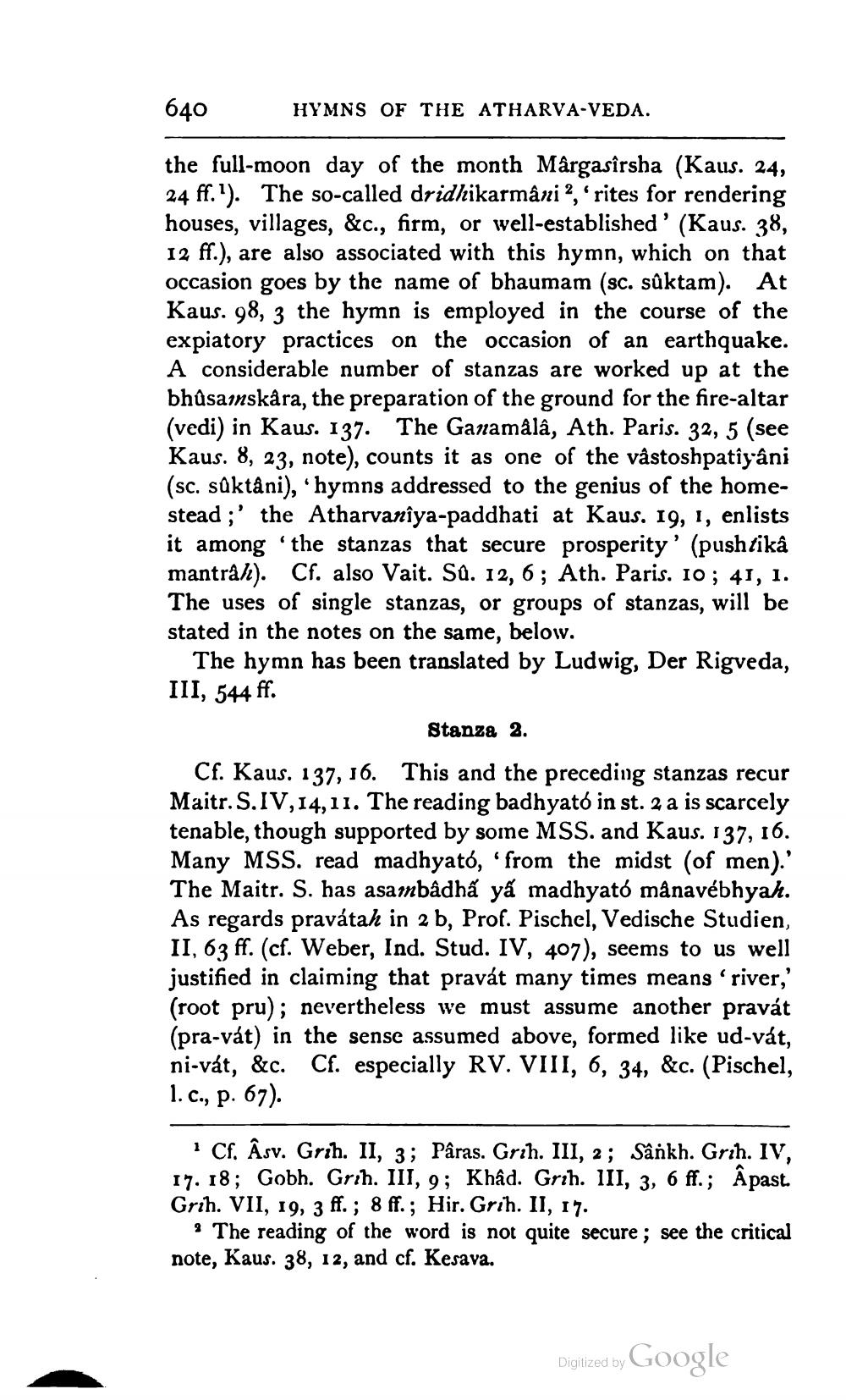________________
640
HYMNS OF THE ATHARVA-VEDA.
the full-moon day of the month Margasîrsha (Kaus. 24, 24 ff.). The so-called dridhikarmâni?,' rites for rendering houses, villages, &c., firm, or well-established' (Kaus. 38, 12 ff.), are also associated with this hymn, which on that occasion goes by the name of bhaumam (sc. sûktam). At Kaus. 98, 3 the hymn is employed in the course of the expiatory practices on the occasion of an earthquake. A considerable number of stanzas are worked up at the bhûsamskåra, the preparation of the ground for the fire-altar (vedi) in Kaus. 137. The Ganamâlâ, Ath. Paris. 32, 5 (see Kaus. 8, 23, note), counts it as one of the vâstoshpatîyâni (sc. saktåni), 'hymns addressed to the genius of the homestead ;' the Atharvanîya-paddhati at Kaus. 19, 1, enlists it among the stanzas that secure prosperity' (pushtika mantral). Cf. also Vait. Sû. 12, 6; Ath. Paris. 10; 41, 1. The uses of single stanzas, or groups of stanzas, will be stated in the notes on the same, below.
The hymn has been translated by Ludwig, Der Rigveda, III, 544 ff.
Stanza 2. Cf. Kaus. 137, 16. This and the preceding stanzas recur Maitr. S.IV,14,11. The reading badhyato in st. 2 a is scarcely tenable, though supported by some MSS. and Kaus. 137, 16. Many MSS. read madhyató, 'from the midst (of men).' The Maitr. S. has asambâdhả ya madhyató månavébhyah. As regards pravátah in 2 b, Prof. Pischel, Vedische Studien, II, 63 ff. (cf. Weber, Ind. Stud. IV, 407), seems to us well justified in claiming that pravát many times means 'river,' (root pru); nevertheless we must assume another pravát (pra-vát) in the sense assumed above, formed like ud-vát, ni-vát, &c. Cf. especially RV. VIII, 6, 34, &c. (Pischel, 1. c., p. 67).
Cf. Âsv. Grih. II, 3; Pâras. Grih. III, 2; Sânkh. Grih. IV, 17. 18; Gobh. Grih. III, 9; Khâd. Grih. III, 3, 6 ff.; Apast. Grih. VII, 19, 3 ff. ; 8 ff.; Hir. Grih. II, 17.
The reading of the word is not quite secure; see the critical note, Kaus. 38, 12, and cf. Kesava.
Digitized by Google




